One of the oldest sites in Philadelphia, Christ Church Burial Ground is located blocks from Independence Hall and other significant historical landmarks. The graveyard dates from Colonial and Revolution-era times, beginning just a few decades after the founding of the city. A walk among the headstones is a who’s who of people who shaped the early days of the United States.
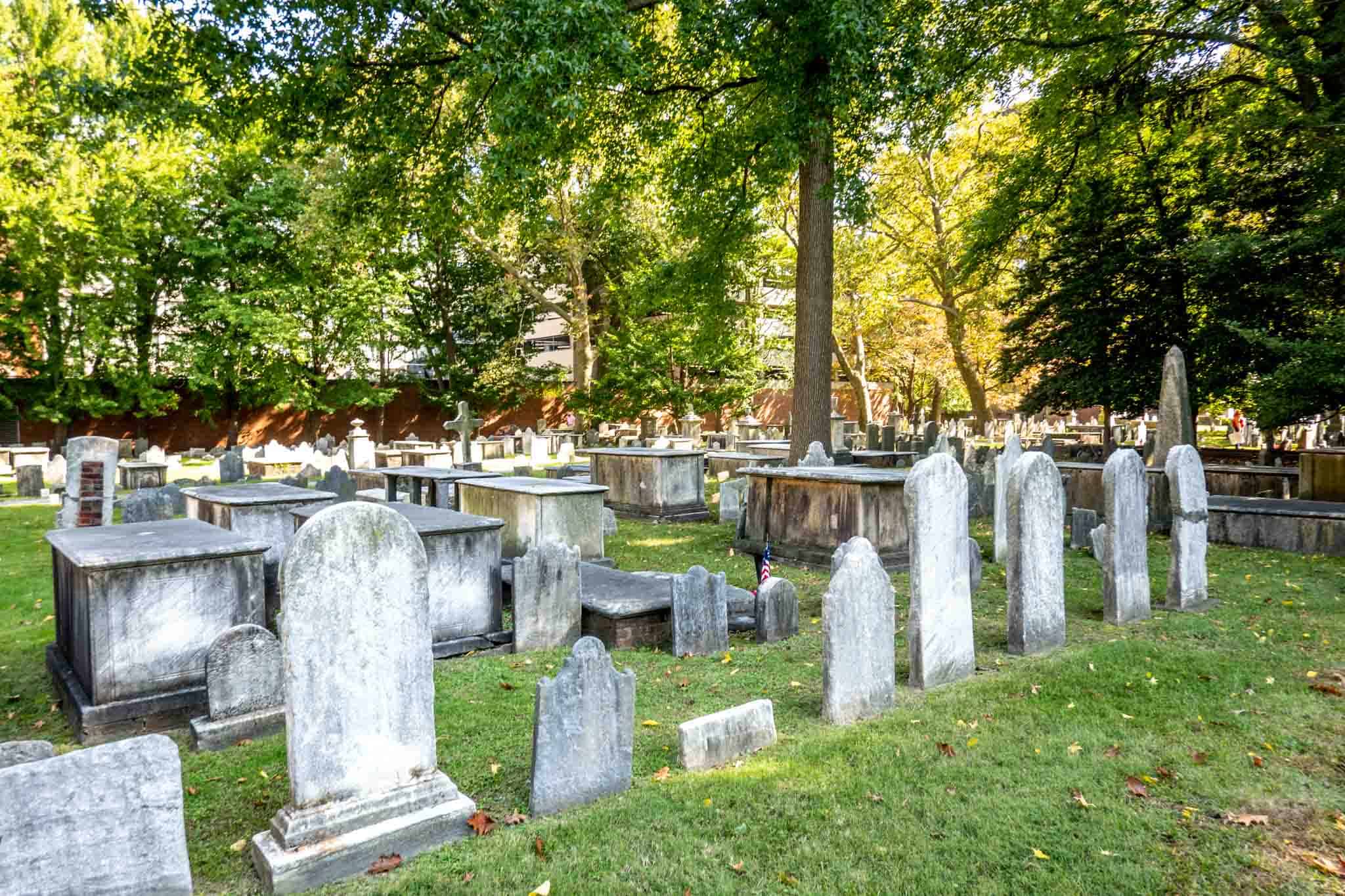
Christ Church Burial Ground has 1400 grave markers, but over 2500 more no longer exist. Many that remain mark the final resting places of Revolutionary War figures and early leaders, including prominent lawyers, innovators in medicine, and five signers of the Declaration of Independence.
Benjamin Franklin is the burial ground’s most famous resident. His grave is one of the most visited attractions in the city.
Unlike other Philadelphia cemeteries like the grand Laurel Hill or the sprawling grounds of The Woodlands that are known for their views and spectacular monuments, Christ Church is all about the history and the significance of the people buried here.
History
The two acres at the corner of 5th and Arch—now in Old City Philadelphia—was “in the suburbs” when Christ Church purchased it in 1719. The church was running out of room in its graveyard, and members wanted to move new burials to the outskirts of the city.
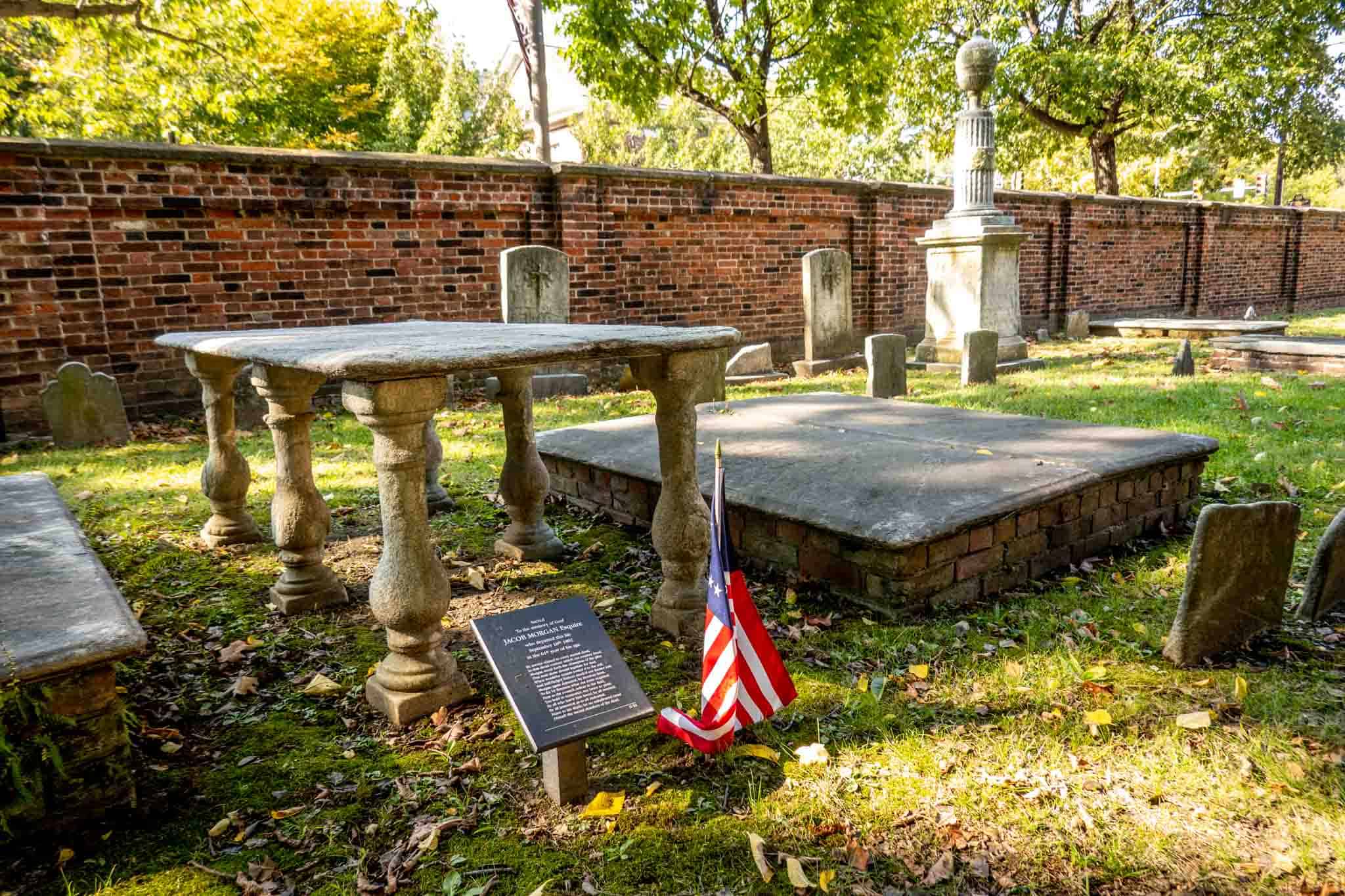
Burials began almost immediately. The earliest tombstone at the burial ground dates from 1720, and many of the gravestones were first placed in the 18th and early 19th centuries.
After over a century of decay in many cases, a number of the gravestones were impossible to read. Church member Edward Clark created a plot plan in 1864 and cataloged every epitaph that was still legible. His efforts helped preserve many details that would have been lost to time.
The burial ground closed to the public in 1977 and felt into a state of disrepair. The Christ Church Preservation Trust stepped in to address the overgrown vegetation, cracked and illegible gravestones, and other structural problems.
Christ Church Burial Ground reopened to the public on April 26, 2003 and has been a popular place for visitors since.
Ben Franklin’s grave
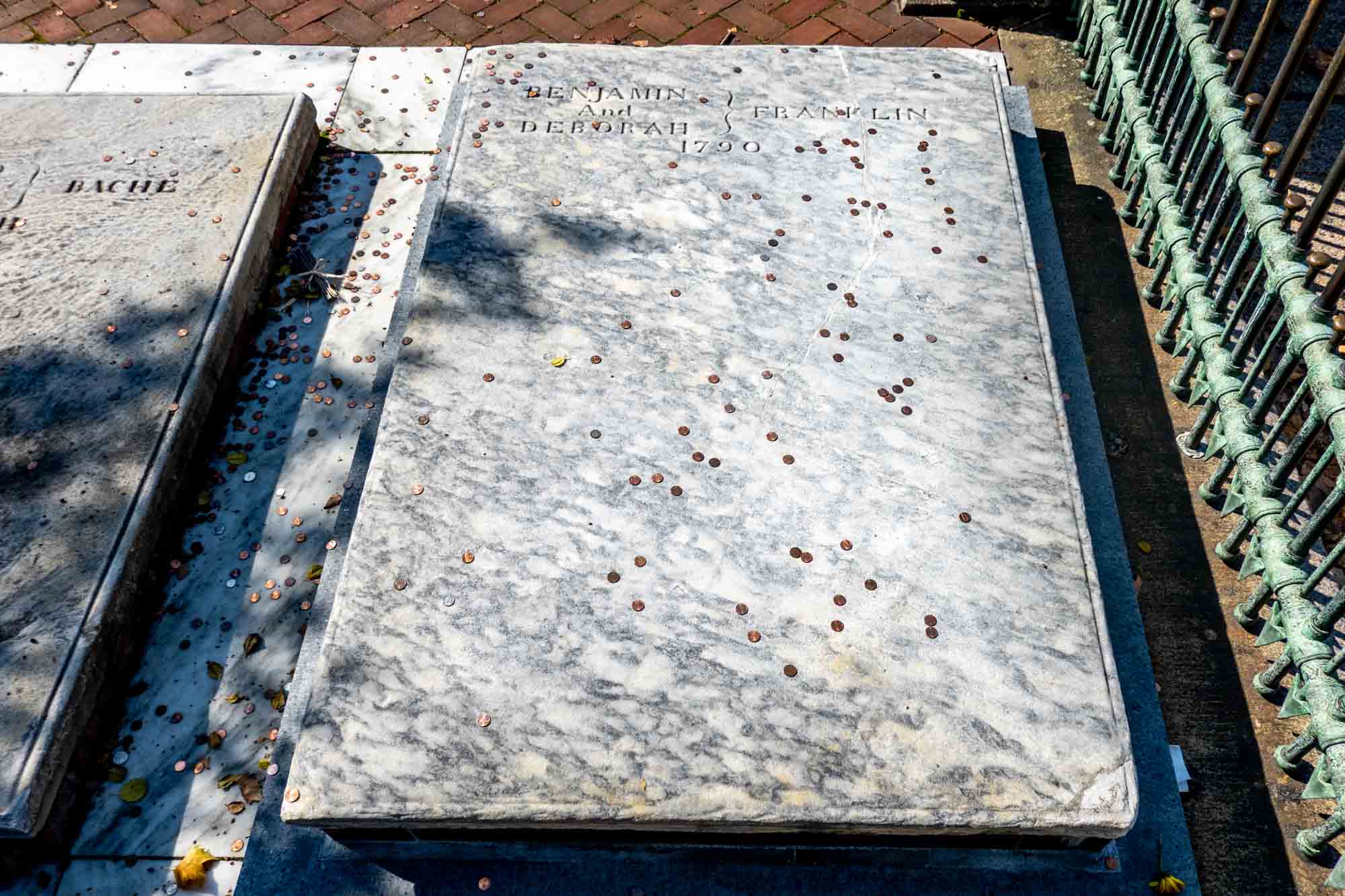
The greatest point of interest at Christ Church Burial Ground is Benjamin Franklin’s grave. It’s practically impossible to list all of Franklin’s roles and accomplishments, but they include signer of the Declaration of Independence and the Constitution, printer, writer, inventor, diplomat, and co-founder of the first hospital.
Franklin passed away in 1790 and was buried with his wife Deborah and their son Francis who had died at age 4 of smallpox. His daughter and son-in-law now share the plot in the northwest corner of the graveyard.
The Franklins’ graves are visible through holes cut in the wall that surrounds the burial ground. There are often pennies on top of the large marble slab, an homage to Franklin’s adage that “a penny saved is a penny earned.”
Notable burials
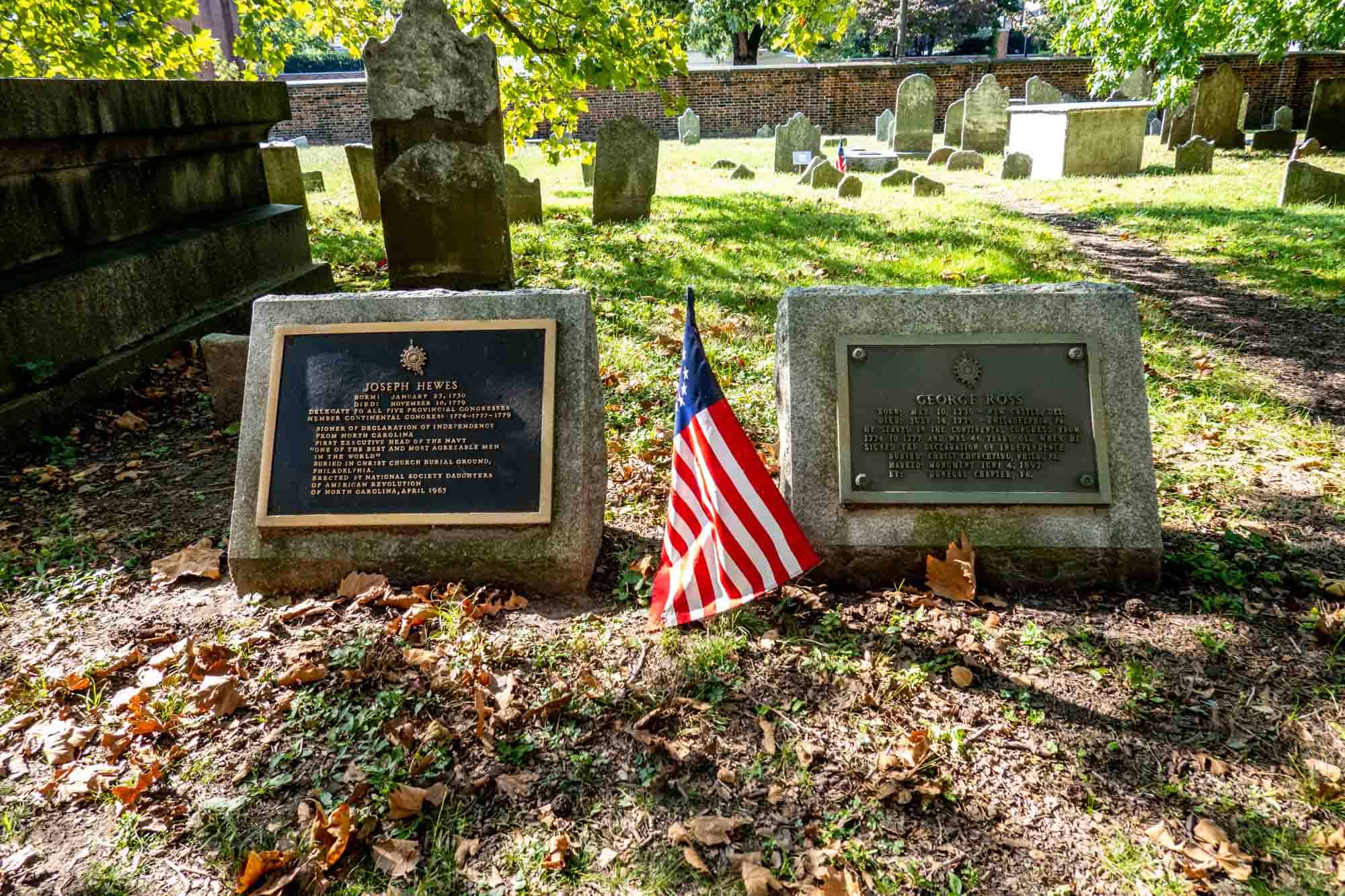
From Bainbridge to Powel, those buried here lend their names to streets and landmarks around the city. Here are some of the most notable people buried in the graveyard.
Dr. Thomas Bond – Dr. Bond co-founded Pennsylvania Hospital, the first hospital in the US, with Benjamin Franklin.
Joseph Hewes – Elected to the Continental Congress representing North Carolina, Hewes was a signer of the Declaration of Independence. He became the de facto first Secretary of the Navy.
Dr. Philip Syng Physick – A professor at the University of Pennsylvania medical school, Dr. Physick was a surgical pioneer and invented medical instruments, including the first stomach pump. He is known as the “Father of American Surgery.” His house still stands on South 4th Street and is said to be haunted.

Samuel Powel – Powel served as the mayor of Philadelphia both before and after the Revolution. His house on South 3rd Street is a museum.
George Ross – A signer of the Declaration of Independence and a member of the Continental Congress, George Ross died before the end of the American Revolution. He was the uncle of Betsy Ross’s first husband.
Dr. Benjamin Rush – Dr. Rush was a vocal advocate for the end of slavery before the Revolution. He was known as the “The Father of American Medicine” and “The Father of American Psychiatry” due to his extensive clinical practice, his work in treating the victims of the 1793 yellow fever pandemic, and his advocacy for the mentally ill. He was a signer of the Declaration of Independence.
Annis Boudinot Stockton – A prolific poet and writer, Stockton was one of the most widely published female writers in America in the 1700s. She was the only woman to be admitted to the American Whig Society, the country’s oldest collegiate political, literary, and debate society.
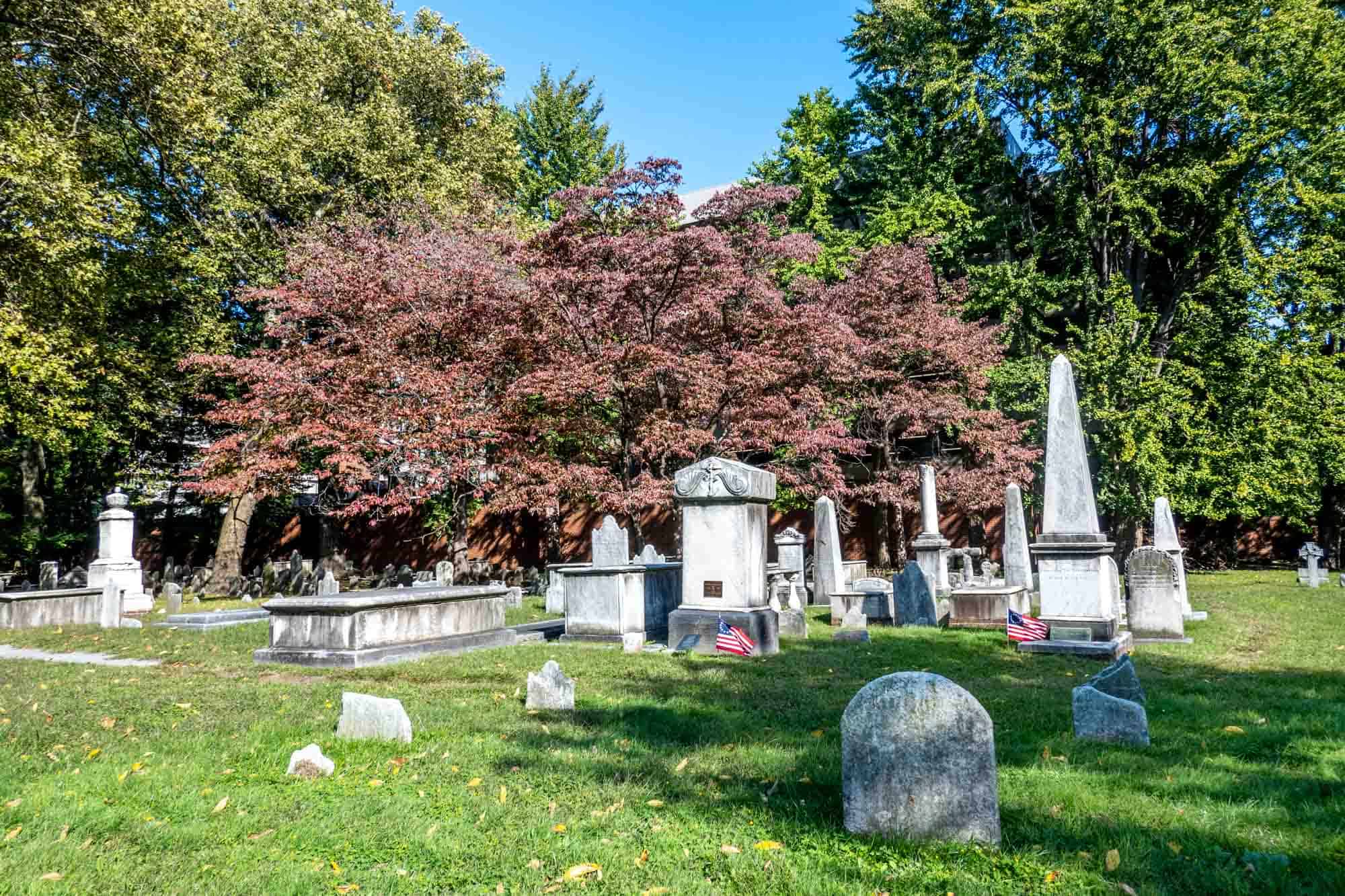
Visiting
The burial ground is located at 5th and Arch. It is closed in January and February.
Franklin’s grave can be seen without paying to enter, though a more thorough visit is recommended. For more information on visiting, see the Christ Church website.
If you book through the affiliate links below, we may earn a small commission (at no extra cost to you).
Where to Stay
Marriott Old City – This 4-star hotel noted for its comfortable beds and helpful staff is close to the sites in Old City.
Kimpton Hotel Monaco – Known for its views of Independence Mall, this modern hotel offers a rooftop lounge and top-notch service.
Loews Philadelphia – Centrally located, the Loews has modern rooms and an indoor pool.
